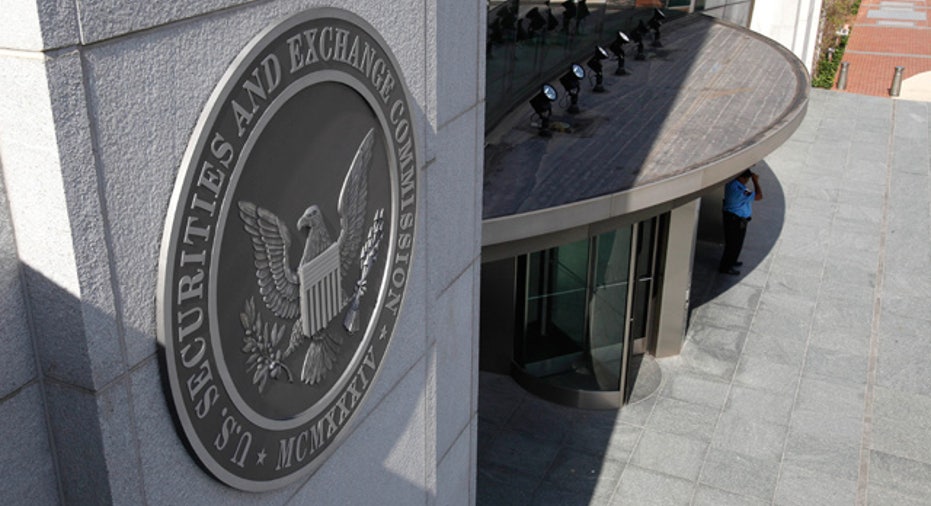SEC Looks to Ease Rules for Launching ETFs

The U.S. Securities and Exchange Commission may revive a proposal that would make it easier and cheaper to launch certain kinds of exchange-traded funds, according to interviews with SEC staff.
Amid fast growth in the $1.5 trillion industry, regulators are looking to cut through red tape for sponsors of less complex ETFs, such as those that track the S&P 500, by allowing them to sidestep the onerous SEC application process.
The SEC first issued such a proposal in March 2008, but it was shelved when the deterioration of the financial markets consumed the SEC's time.
The SEC staff is still in the early stages of developing the plan, and is unsure whether they will simply dust off the old proposal, or write a new one. If the rule is adopted, the SEC believes it will save time and resources not only for fund sponsors, but also for the agency's staff, which could then focus its attention on approvals for more exotic ETFs that could carry risks for less sophisticated investors, such as those that use derivatives.
In addition, lower costs to launch could translate into lower costs for shareholders.
"That would help issuers and their sponsors because they wouldn't have to incur the costs to file exemptive applications with us,'' said Norm Champ, the director of the SEC's Investment Management Division, in an interview with Reuters on Thursday. "And if we could get some of this relief codified, it would also free staff up.''
Like mutual funds, ETFs are an investment vehicle that own an array of stocks or bonds. But ETFs, such as those sponsored by BlackRock, Vanguard and State Street Global Advisors , offer shares that can be bought and sold in real time on public exchanges.
Those unique characteristics mean that ETFs do not conform to the legal requirements of the federal securities laws governing mutual funds. Therefore, every time a new ETF is launched, it needs to seek a special exemption from the SEC staff first.
The SEC is expecting, at the very least, that the rule would cover the most basic products, such as those that track an index. It is also possible the proposal could cover other kinds of ETFs, such as actively managed funds.
The 2008 proposal, which was put forth under Republican Chairman Christopher Cox, covered both ETFs that track indices and certain actively managed funds. It would have allowed funds to bypass the application process if they were transparent and disclosed on the Internet the identities and weightings of securities underlying the products.
When it was first proposed, the SEC sought public comments including whether it should demand additional liquidity requirements as a condition of avoiding the approval process.
The ETF industry has grown tremendously since then. As of March, it had $1.5 trillion in assets, compared with just $530 billion in 2008, according to data from Lipper, the funds research unit of Thomson Reuters Corp. The idea for a new ETF rule was revived this past winter after staff from the Investment Management Division reviewed 70 project ideas to help prioritize its rulemaking agenda.
After putting everything to a vote and consulting SEC commissioners this one emerged as a clear favorite.
ETF TRIAGE
The SEC has been focusing on riskier kinds of ETFs, such as inverse and leveraged products, which are designed to amplify short-term returns by using debt and derivatives.
Over the past few years, regulators at both the SEC and the Financial Industry Regulatory Authority have been scrutinizing these more exotic products amid concerns they were being sold to unsophisticated investors.
For nearly three years, the SEC placed a moratorium on applications for actively managed ETFs that use derivatives. The ban was partially lifted late last year. The idea behind the revived proposal is that by relieving the staff of their duties to review the more simplistic products, they will then be able to devote more time to scrutinizing the complex products.
"The staff agrees there should be rules that codify a lot of this to make it better for them and for us,'' said Michael Rosella, a partner at the law firm Paul Hastings and chair of the firm's investment management practice.
"I guess the key always is to find a rule that gives enough permission and enough flexibility, but doesn't create opportunity for mischief.''
Rosella said in some cases it can take a year for the SEC to grant exemptive relief to an ETF. The SEC's Investment Management Division devotes about 10 full-time staffers to reviewing exemptive applications, Champ said. Currently, there are 105 applications pending, about a third of which are for ETFs. Of those, about half of them track indices and the other half are actively managed. Despite this backlog, SEC officials say they have been trying to streamline the ETF approval process and move the simple applications more quickly.
"There are certain alternative funds that are investing in asset classes that are raising interesting and complicated issues, but by and large, it's a four-to-six months and sometimes shorter process,'' said Barry Pershkow, a senior special counsel on ETFs in the SEC's Investment Management Division. Champ and Pershkow said many of the exemptive applications the SEC receives have become routine and use identical language to previously approved applications.
Knocking those out of the pipeline, Champ said, ``Would be meaningful even if the rule only covered plain vanilla index ETFs.''



















